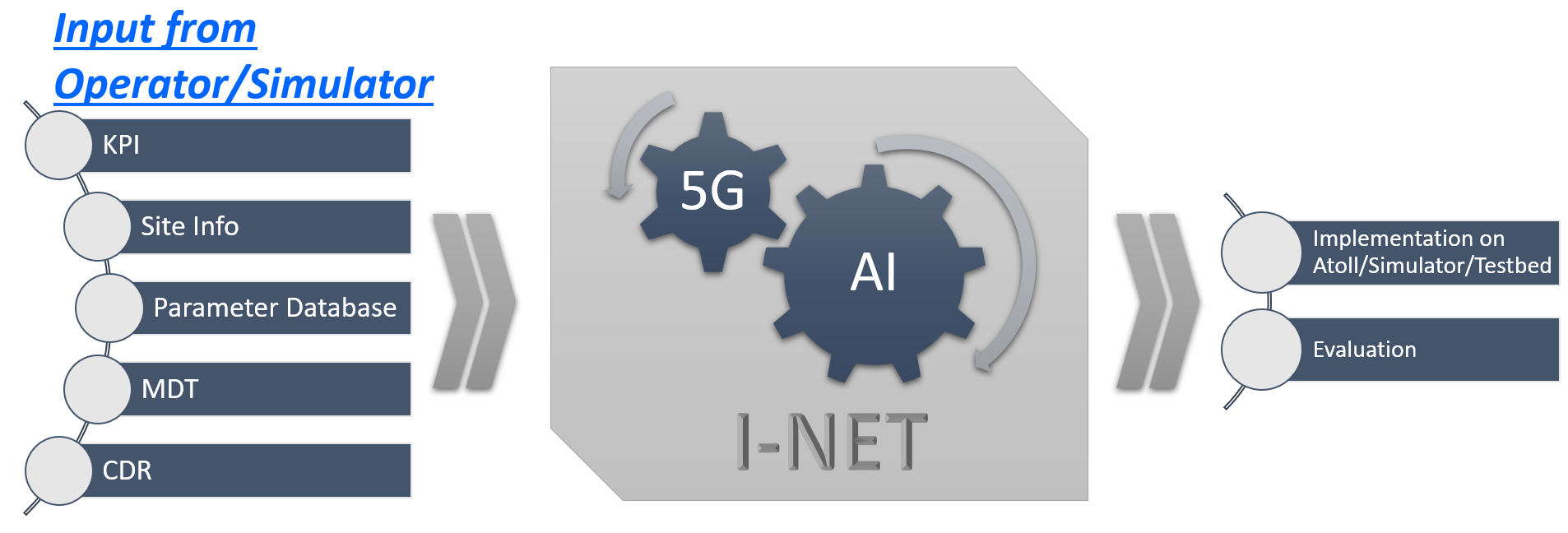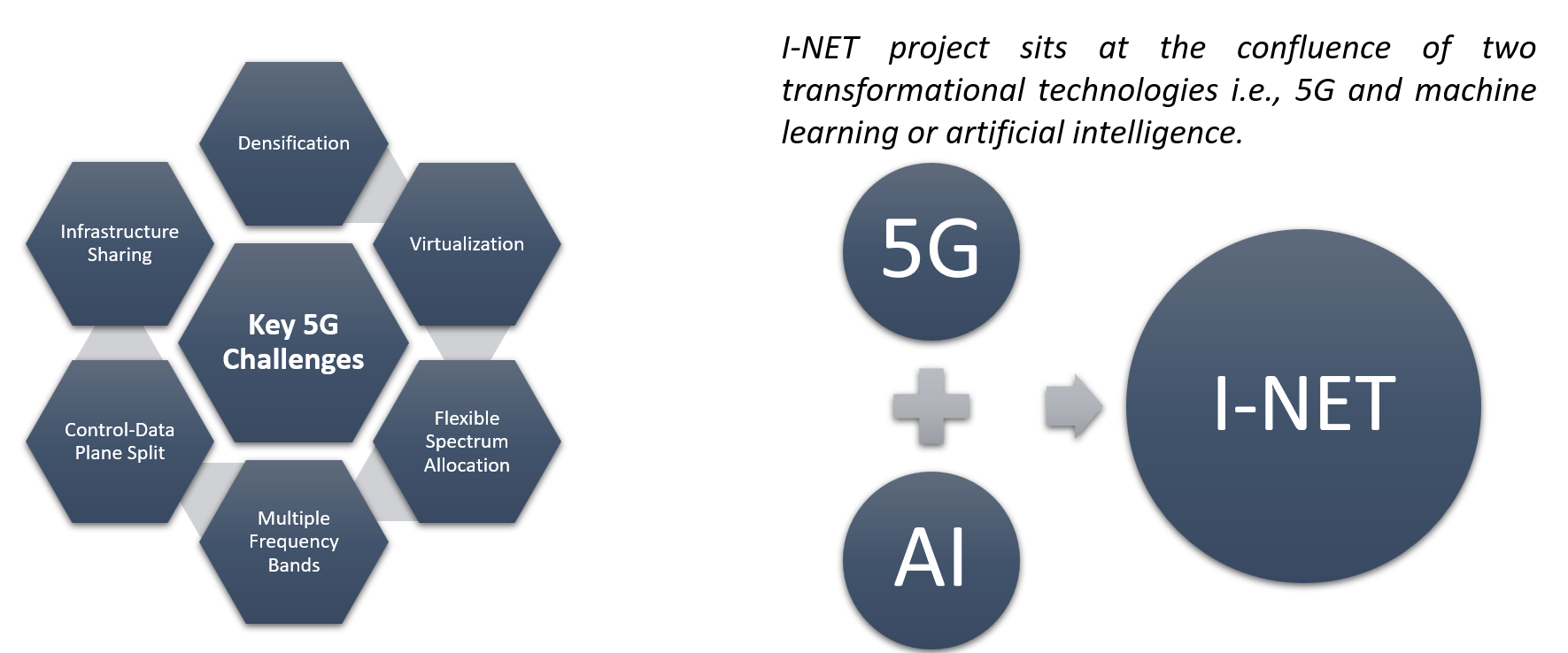Lunar Com Network: Robust and High-Data-Rate Hybrid RF/Optical Communications for Lunar Missions
Title: Lunar Com Network: Robust and High-Data-Rate Hybrid RF/Optical Communications for Lunar Missions
Funding: This project is sponsored by NASA under Proposal#20-2020EPSCoR-0014 .
Project Duration: Three Years (September 1, 2020 - August 31, 2023)
Project Description
Future lunar missions, producing ever-increasing scientific data, require substantially higher performance communication links/networks between Earth stations and Moon explorers (e.g., landers, rovers, and orbiters) than current qualified communication systems support. Space-based networks for lunar missions require a new standard in communication link and architecture design that provides the high reliability of existing systems but also much higher data rates, continuous coverage, and minimum latency. Radio Frequency (RF) communication systems provide reliable communications over a variety of conditions but are relatively slow and are not sufficiently energy efficient for use with power-limited small satellite (SmallSat) platforms. Optical communication (also known as laser communication or free-space optical (FSO)) can provide high-data-rate links, however, restrictions imposed by Earth weather and pointing errors limit its exclusive use. Therefore, a hybrid RF/optical approach is the most practical option to provide the critical high-data-rate, reliable and efficient communication links, and network architecture for lunar missions. There is currently no demonstrated SmallSat and space networking strategy for lunar missions that utilizes both RF and optical communications together in a seamless way.
Project Goals
The goal of this project is to design robust and high-data-rate communications for lunar missions. This goal will be attained with the following key research tasks:
- Hybrid RF/optical communication system design and integration.
- Network design for lunar communication (LunarCom) architecture between the Moon and Earth stations with robust and high-data-rate hybrid RF/optical links.
- System-level testing, evaluations, and STEM education programs.
We propose a combined theoretical and experimental effort to develop seamless integration of RF and optical communication systems for SmallSats and to design a lunar relay network communication architecture between Earth and Moon stations by using the Lunar Gateway and a low-Earth-orbit (LEO) SmallSat constellation. The proposed lunar communications architecture will include bidirectional hybrid RF/optical communications links between Earth stations and small LEO relay satellites, between the LEO constellation and the Lunar Gateway, and between the Gateway and Moon explorers. The proposed architecture design will address key required RF and optical communication parameters and capabilities, including frequency and wavelength bands, data rates, seamless integration for efficient pointing, acquisition, and tracking (PAT), quality of service (QoS) and power requirements, appropriate networking protocols such as delay/disruption tolerant networking (DTN), network access strategies, algorithms to detect and recover from communication outages, and design of communication-aware topologies for SmallSat constellations.
Combining these technologies can bring critical forward progress to important missions of NASA, partnering international space agencies, and private industry, such as Aerospace, Iridium, OneWeb, and Starlink (SpaceX). RF and optical communication modalities and low-cost SmallSats are both growing interests for NASA. The technologies developed in this project will support affordable, efficient, and sustainable NASA space exploration and discovery across both LEO and deep space lunar and Mars missions. The application domains of the outcomes of the proposed work can also extend to all communication links in the NASA Space Communications and Navigation (SCaN) network. The work closely aligns with NASA EPSCoR objectives, including contribution to and promotion of the overall research infrastructure, science and technology capabilities of Oklahoma in areas of strategic importance to NASA missions, and development of strong partnerships with NASA centers.
Active Members
Principal Investigator: Dr. Andrew Arena, NASA Oklahoma Space Grant/NASA EPSCoR Director, Professor, Mechanical and Aerospace Engineering, Oklahoma State University.
Science Investigator: Dr. Sabit Ekin, Assistant Professor, Electrical and Computer Engineering, Oklahoma State University.
Co-Investigator: Dr. Ali Imran, Director - AI4Networks Research Centre, Associate Professor, Electrical and Computer Engineering, University of Oklahoma.
Co-Investigator: Dr. John O’Hara, Assistant Professor, Electrical and Computer Engineering, Oklahoma State University.
Co-Investigator: Dr. Peter LoPresti, Professor, Electrical and Computer Engineering, University of Tulsa.
Co-Investigator: Dr. Jamey Jacob, Professor, Mechanical and Aerospace Engineering, Unmanned Systems Research Institute (USRI), Director, Oklahoma State University
Co-Investigator: Dr. Ickhyun Song, Assistant Professor, Electrical and Computer Engineering, OSU
Co-Investigator:Dr. Wooyeol Choi, Assistant Professor, Electrical and Computer Engineering, OSU
Graduate Researcher: Waseem Raza, Graduate Research Assistant, University of Oklahoma.
Graduate Researcher: Dylan Shadoan, Oklahoma State University.
Graduate Researcher: Mostafa Abdelhadi, Oklahoma State University.
Integration of project outcomes into teaching
The project outcomes are being adapted into following course being taught by PI.
- "Emerging Topics in 5G and Beyond" Offered in Sring 2018, 2019 and 2020.
Tutorials
- Ali Imran, Moving Towards Zero-Touch Automation, A Key Enabler for 6G: Addressing the Training Data Sparsity/Scarcity Challenge a half day tutorial at IEEE BlackSeaCom 2020, May 26-29, 2020.
- Ali Imran, Muhammad Ali Imran, Moving Towards Zero-Touch Automation, A Key Enabler for 6G: The Challenges & Opportunities a half day tutorial at IEEE Wireless Communications and Networking Conference, May 25-28, 2020.
Keynotes/Invited Talks
- Ali Imran "Leveraging AI for Zero-Touch Automation in 6G: How to Address the Training Data Sparsity/Scarcity Challenge?" keynote at IEEE 2nd International workshop on Data Driven Intelligence for Networks and Systems workshop at Infocom 2020, July 6-9, Toronto, Canada.
- Ali Imran "Towards Zero Touch Automation in Emerging Wireless Networks", keynote at 13th IEEE International Conference on Open Source System and Technologies 17-19 Dec, 2019.
- Ali Imran "Addressing the Hyper Parameterization Challenge in AI for Wireless Networks", panel talk at, IEEE Globecom, Dec, 9-13-2019
- Ali Imran "AI enabled Zero Touch automation for 5G and beyond" invited talk, 5G NA, Silicon Valley, Nov 13-14, 2019.
International Collaboration Opportunities
- Project student has interned in the following company:
- New T-Mobile (Formerly known as Sprint), CT, USA in Spring, 2020.
Conference Attendance by Students
- Project students have attended and presented their work at following conferences
- Provide this info.
Confirm following slides and suggest More
-
Journal Articles
- H. N. Qureshi, A. Imran and A. Abu-Dayya, "Enhanced MDT-based Performance Estimation for AI Driven Optimization in Future Cellular Networks," IEEE Access, September 2020, doi: 10.1109/ACCESS.2020.3021030.
- S. M. A. Zaidi, M. Manalastas, H. Farooq, and A. Imran, "Mobility Management in Emerging Ultra-Dense Cellular Networks: A Survey, Outlook, and Future Research Directions," IEEE Access, vol. 8, pp. 183505-183533, August 2020, doi: 10.1109/ACCESS.2020.3027258.
- U. S. Hashmi, S. A. R. Zaidi, A. Imran, and A. Abu-Dayya, "Enhancing Downlink QoS and Energy Efficiency through a User-Centric Stienen Cell Architecture for mmWave Networks," IEEE Transactions on Green Communications and Networking, vol. 4, no. 2, pp. 387-403, June 2020, doi: 10.1109/TGCN.2020.2967888.
- H. Farooq, A. Asghar, and A. Imran, "Mobility Prediction Based Proactive Dynamic Network Orchestration for Load Balancing With QoS Constraint (OPERA)," IEEE TRANSACTIONS ON VEHICULAR TECHNOLOGY, vol. 69, no. 3, pp. 3370-3383, March 2020, doi: 10.1109/TVT.2020.2966725.
- O. Onireti, L. Zhang, A. Imran, and M. A. Imran , "Outage Probability in the Uplink of Multitier Millimeter Wave Cellular Networks," IEEE SYSTEMS JOURNAL, January 2020, doi: 10.1109/JSYST.2020.2965001.
-
Theses
- Realistic Modeling and Evaluation of Handover Events in a Multi-Carrier Cellular Network as a Preliminary Step Towards COP-KPI Relationship Realization (Marvin Manalastas Masters Thesis)



